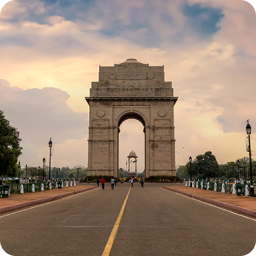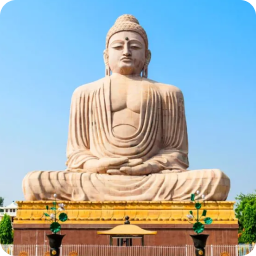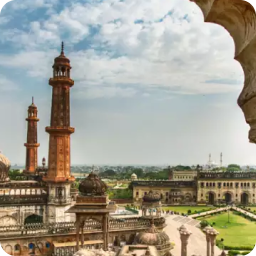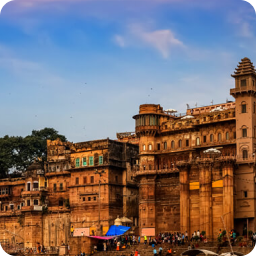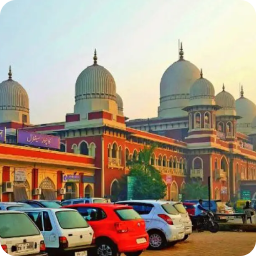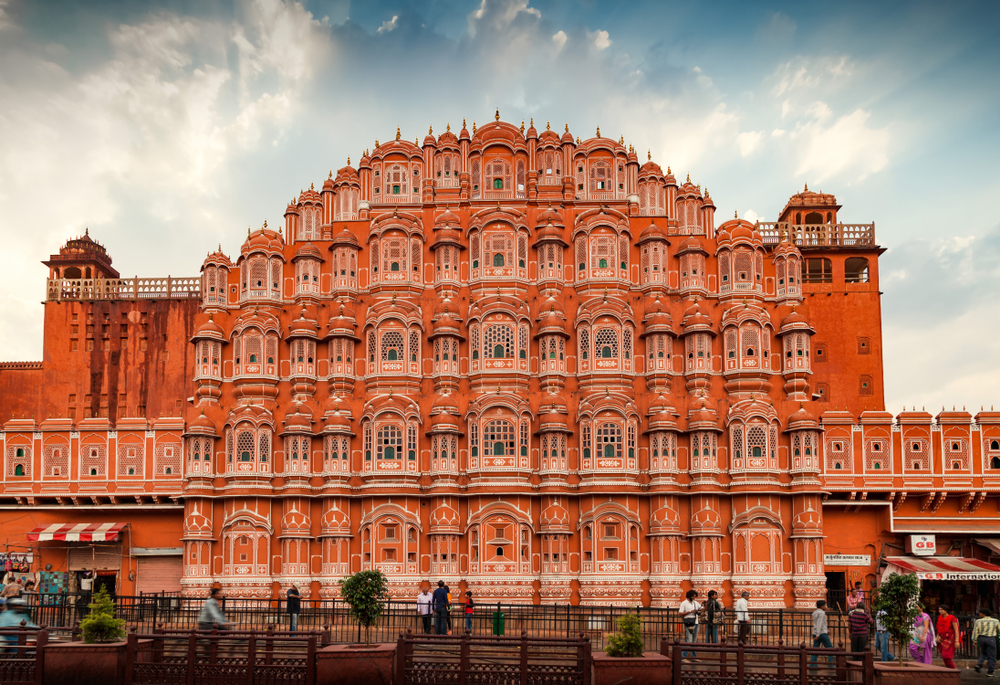|
Militancy In Jammu And Kashmir: Background, Human Right Issue, AFSPA |
To prepare for INTERNAL SECURITY for any competitive exam, aspirants have to know about Militancy In Jammu and Kashmir. It gives an idea of all the important topics for the IAS Exam and the Economy syllabus (GS-III.). Militancy In Jammu and Kashmir terms are important from Economy perspectives in the UPSC exam. IAS aspirants should thoroughly understand their meaning and application, as questions can be asked from this static portion of the IAS Syllabus in both the UPSC Prelims and the UPSC Mains exams. Even these topics are also highly linked with current affairs. Almost every question asked from them is related to current events. So, apart from standard textbooks, you should rely on newspapers and news analyses as well for these sections.
Jammu and Kashmir: Background
- After the death of Maharaja Ranjit Singh and defeat of the Sikhs, Treaty of Lahore was signed.
- The treaty was signed by Governor-General Sir Henry Harding on behalf of the East India Company.
- Treaty handed over the territory of Kashmir to Gulab Singh, since then Kashmir was ruled by the Dogra dynasty.
Jammu and Kashmir After Independence: Diverse Cultures and Peoples
- Nearly 77 percent Muslim population was ruled by the Hindu king Maharaja Hari Singh.
- Pluralism and cultural diversity are the hallmarks of the state.
- Main regions of state:
- The Northern part of the hill region is dominated by Sunni Muslims.
- Plains of Jammu dominated by Hindu.
- Hilly region of Ladakh was dominated by the Buddhist and some Shia Muslims.
- Region of Gilgit and Baltistan is a geo-politically important location that shares a border with Afghanistan and China, slightly populated with Shia Muslims.
- Sikh can be seen in Jammu as well Kashmir region of the state.
Jammu and Kashmir: Accession
- At the time of partition of India and the political integration of India, Hari Singh, the ruler of the state, delayed making a decision about the future of his state. Thus, he decided to remain independent by not joining either Pakistan or India.
- However, an uprising in the western districts of the state followed by an attack by the raiders from neighboring Northwest Frontier Province, supported by Pakistan, forced the Ruler to change his stand.
- On October 26, 1947, Hari Singh acceded to India in return for the Indian military being airlifted to Kashmir to engage the Pakistan-supported forces.
- As per Instrument of Accession the subjects like Defence, Foreign Affairs, Finance and communication were given to Indian parliament and rest of the laws need concurrence of state government.
- After the accession troops of Pakistan were expelled out of the valley by the Indian Troops except the area which is known as Pakistan occupied Kashmir in India and Azad Kashmir in Pakistan.
Jammu and Kashmir: State assembly
- In 1951 constituent assembly of Jammu and Kashmir convened and the assembly reaffirmed the Accession of the state to India and also prepared the constitution of the state.
- The constitution of Jammu and Kashmir states that “the state is and shall be an integral part of the Union of India”.
Jammu and Kashmir and the United Nation:
- Mountbatten suggested the Government of India to refer the Kashmir problem to the United Nation. UN Intervention in Kashmir led to a ceasefire agreement between India and Pakistan.
- The ceasefire Line is known as the Line of Control (LOC).
- A UN Military Observer Group in India and Pakistan continues to report the violation of ceasefire.
- UN also passed a resolution for a referendum under the supervision of UN after Pakistan had withdrawn its troops from Kashmir which is under their control but till today referendum has not happened as Pakistan has refused to withdraw their troops from POK.
- Since the accession of Kashmir to India, the tension continues between both countries have not died down and this tension resulted in underdevelopment in the region along with instability.
Jammu and Kashmir as a battleground of proxy war
- Since the beginning, Pakistan has tried to destabilize the Jammu and Kashmir region by direct military confrontation. Pakistan had suffered heavy losses in every war whether it was 1947, 1965 or 1971. In the 1971 war Pakistan was humiliated as Eastern Pakistan was made a separate nation where India played a major role.
- After all these military confrontations Pakistan realized that direct military confrontation with India would be counter-productive.
- Pakistan resorted to the tactics of low intensity war and started the separatist and militant insurgency in Kashmir in the late 1980s in the name of Jihad.
- Existence of a dis-satisfied group of Kashmiri’s named Jammu and Kashmir Liberation Front (JKLF) was used by Pakistan for insurgency. Yasin Malik was a leader of JKLF who organized militancy in Kashmir and demanded the independence of Jammu and Kashmir but later on Yasin Malik denounced the path of violence and believed in peace talks to resolve the dispute.
- But with the help of Pakistan intelligence agency ISI infiltration through the border led to establishment of new terrorist organization in the valley such as Hizbul Mujahideen, Lashkar-e-taiba, Jaish-e-Mohammed Harkart-ul-Jehad-e-islami (Huji), etc.
- Establishment of these terrorist organizations in the valley resulted ethnic cleansing which forced many Kashmiri Pandits to leave the valley and this resulted in demographic change in the valley.
- Pakistan’s direct or indirect involvement in the funding and training of terrorist organizations in the Jammu and Kashmir region became a major external security threat for India.
- Along with role of external player i.e. Pakistan the Indian government failed to fulfill the aspirations of local people, lack of development, militarization of the region, disputed state election of 1987 fuelled the militancy in the valley which forced some of state legislative members to form armed insurgent groups.
- So, Kashmir’s present situation is due to both the factors i.e. (internal and external). Lack of development, lack of education and unemployment has made Kashmiri youth easy prey for terrorists’ groups. The youth protest during Afzal Guru’s execution, sympathy rally for terrorist Burhan Wani shows how deep the radicalization has reached in Kashmir region.
Adoption of irregular warfare in Jammu and Kashmir by the ISI
- Irregular warfare consists of tribal warfare, small wars, and low intensity war. This aimed at psychological destruction.
- The results which cannot be achieved by direct war can be shaped by the low intensity war.
- In Kashmir we can clearly see the low intensity war front in the form of armed revolt, Guerrilla warfare, political revolution and war for independence became means of irregular warfare.
Mechanism used for proxy war in Jammu and Kashmir
- Propaganda and various malicious campaigns to brainwash the people of the valley and create trust deficit towards India.
- Infiltration of terrorists from across the border and affect the ongoing developmental works in the valley.
- Use of information technology in training and recruitment of terrorists.
- Internationalize the issue of Kashmir at forums like the UN and create an image of India as biased towards a particular religion.
- Use of locals for intelligence sharing. The locals have become the eyes and ears of terrorist groups. They provide sensitive information about military installations; base stations and they even provide shelter to these groups.
- As Pakistan’s role in international forums is diminishing, India has strengthened its relations with foreign countries like USA, France, Israel, Germany, Japan, Australia and even Saudi Arabia and UAE. To avoid collective backlash from these countries, Pakistan has diverted its terrorist attacks on Indian military bases. This can be seen from recent attacks in Pathankot, Uri or attack on military convoys. As the security preparedness of India is strengthened during the last few years, attacks on military bases to weaken the security system has become a new tactic of Pakistan to bleed India with thousand cuts.
Jammu and Kashmir And Human Right Issue
- Indian armed forces are regularly accused for human right violation in the valley by various international organizations like Human Right Watch and Amnesty International.
- Human right violation in the form of –
- Extra-judicial executions
- Disappearance
- Torture
- Lack of freedom of speech and expression.
- Illegal detention under National Security Act.
- Indiscriminate use of pellet guns.
- Illegal use of powers under AFSPA.
Reach Of Terrorism In Jammu and Kashmir
- The unrest in the valley after the encounter of Hizbul Mujahideen commander Burhan Muzaffar Wani .
- He was mourned by 2,00,000 people during his funeral process.
- Violent protest started in the valley
- Shutdown of Kashmir was called by the separatist leaders.
- Police station and security force personnel were targeted by the mob.
- Then prime minister of Pakistan called Burhan Wani “martyr”.
All these shows how deep is the root of terrorism in Kashmir. Glorifying terrorism and such a level of mass support forced the central government to rethink its Kashmir strategy.
Main tactics used by Pakistan is crowd mobilization, defaming Indian security forces and internationalizing the Kashmir issue.
Shift In Strategy Against The Militancy In The Jammu and Kashmir
- Operation All-out- it is an anti-Militancy operation launched by the government to establish peace in the valley. In this, various terrorists were shortlisted and their information and location were given to the security forces in order to flush them out of Kashmir.
- After the attack of February 14, 2019 in which more than 40 CRPF soldiers lost their lives in the suicide bomb attack from terror group of jaish-e-mohammed.
- In wake of this attack Indian Air Force launched a non-military preemptive attack after getting information about the terrorist camp in the region of Balakot. In this attack many terrorist camps were destroyed.
- This policy of counter attack at such a large level would act as deterrence for terrorists.
Other issues like rehabilitation and resettlement of Kashmir pandits and referendum in the valley
- The UN mediated referendum was supposed to happen immediately after Pakistan’s attack on India in 1947. But the referendum never happened as Pakistan never withdrew its troops from the Kashmir region.
- Since the demography of Jammu and Kashmir has changed over the years and considering the radicalized youth in the region, referendum would not be a viable solution, at least in the near future.
- Three decades have passed since the exodus of Kashmiri Pandits from the region. They are made to live like refugees in their own country. Their resettlement in the region will become possible only when the region rips the fruits of development and the security scenario becomes peaceful.
Jammu and Kashmir Militancy: Issue of human shield
- In 2017, a person tied to the bonnet of a jeep and used it as a shield against stone pelters. This event was criticised by human right activists all over the world.
- Amnesty International described it as inhuman act and amounting to torture and according to Geneva Convention it is war crime.
- There are points in support and against over using human shield:
| In favour- | Using human shield bloodshed can be avoided and unnecessary use of violence can be avoided.
Life of Jawans and unnecessary sacrifices can be avoided. |
| Against- | Violence of human rights and the image of the army also suffered due to the act.
In fighting militancy or any internal security problem, the state cannot deny the fundamental right of people. |
Security forces can use more humanitarian methods which are more balanced in justice and fairness.
Jammu and Kashmir Militancy: Use of pellet gun
- Tear gas, Water cannon, Pepper, pellet guns are common examples of non-lethal crowd control methods used by police and army.
- Pellet guns are made to injure individuals. They are effective over a short range of 500 yards but it can be lethal when fired from very short range and can hurt sensitive parts very badly.
- Human right activists are against the use of pellet guns over the crowd so less harmful methods should be deployed.
TNSV Prasad committee report over the use of the pellet guns:
- MHA formed committee over the use of pellet guns here are important recommendation:
- Pellet guns should be used in the rarest of the rare case.
- Instead of pellet guns use other non-lethal methods of crowd control like chilli grenade shell, tear gas etc
- Centre in response to the Supreme Court order in which C in order to consider more effective measures the government asked security forces to use Plastic bullets.
Status of Stone pelting in the valley
- It is a crowd mobilization method of ISI and supported by the Hurriyat.
- The incidents of stone pelting were at peak during the 2016-17 after the actions taken by the NIA against Hurriyat leaders had brought down the event of stone pelting.
Jammu and Kashmir Militancy: Issue of AFSPA (Covered in separate chapter)
- AFSPA confers special powers to the armed personnel including unwarranted arrest and search in disturbed areas.
- This is also controversial in nature.
Jammu and Kashmir Militancy: Various Initiatives and scheme by the government of India
The government wants to use development as tool against the militancy in Kashmir for that it launched several initiatives:
- UDAAN was started with an aim to provide skill to the youth of the valley.
- PM’s development package for J&K: under this government focused on creating new avenues of employment and better infrastructure in transportation, health, renewable energy, tourism etc.
- Creating institutes like AIIMS, IIT, and IIM construction of tunnels to reduce time lost in travelling.
- Focus over developing new rail links.
- Project Himayat: capacity building and employment of youth.
- Project Sadhbhavana: of the Indian army helping the youth in shaping their dream.
- Project Umeed: for empowerment of women.
Present situation of Jammu and Kashmir
- The articles which provide special status to the state of Jammu and Kashmir were revoked by presidential order. It abrogated article 370 and 35A.
- Now the constitution of India is applicable to the state of Jammu and Kashmir.
- Reorganization of the state of Jammu and Kashmir into two separate union territories of Jammu and Kashmir (with legislature) and Ladakh without legislature.
- (Note: For special provision refer the polity workbook)
Jammu and Kashmir Militancy: Conflict over Siachen
- Siachen is a glacier that lies in the Karakoram Range. There was a military conflict between the Indian and Pakistan after that ceasefire line was established.
- In 1984 India started “Operation Meghdoot” to free it from Pakistani forces. It is the highest battle ground of the world.
- Siachen is a region which is always in the news due to the death of armed personnel due to harsh weather.
- Technology should be deployed in order to bring causality and guarding the borders properly.
- Note: Issue of Aksai chin is discussed in the chapter of border security.
- So, a comprehensive policy is needed for an hour which can bridge the trust deficit in people toward the government.
| Also Read: Extremism And Development: Linkages, Causes, Solutions, and Countermeasures |






